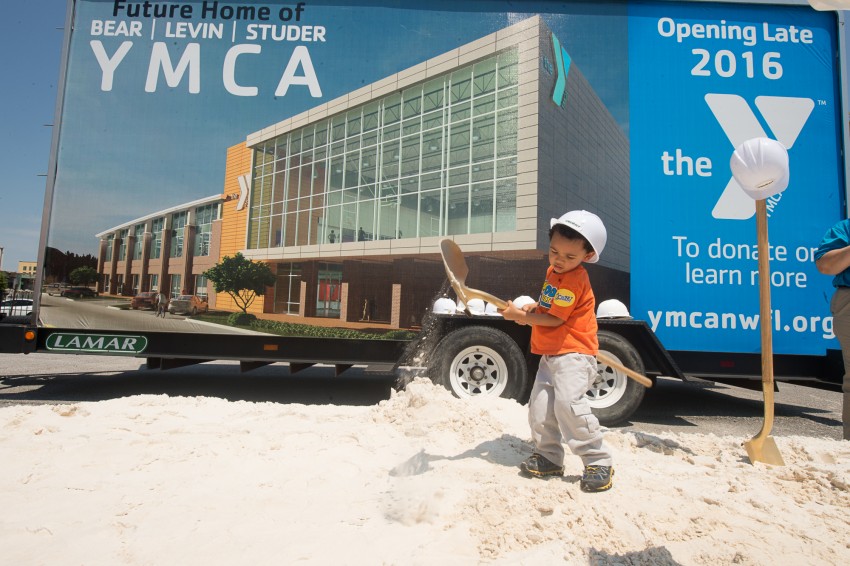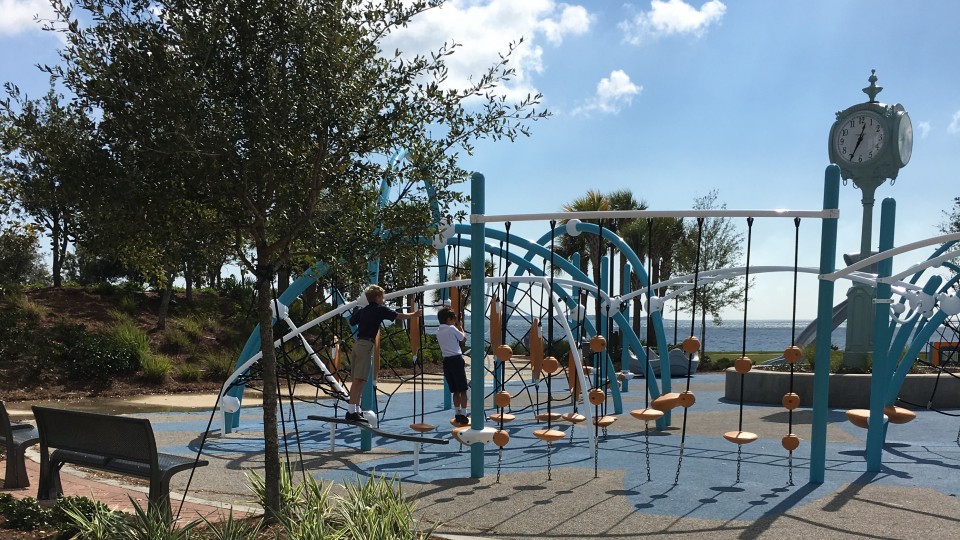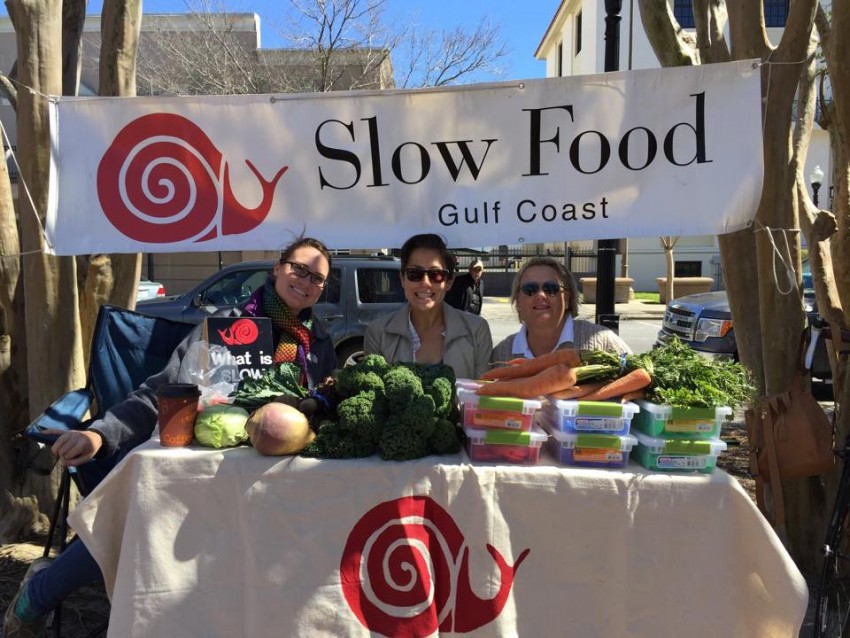Can Pensacola build a culture of health?
- November 11, 2015
- / Shannon Nickinson
- / community-dashboard

The YMCA of Northwest Florida breaks ground during a ceremony for the $15 million facility to be built in downtown Pensacola Thursday, August 13, 2015. (Michael Spooneybarger/ Studer Community Institute
A Saturday in downtown Pensacola these days does a body good.
Here in the midst of Foo Foo Fest, which chains together cultural and arts events into a two-week celebration of what Pensacola can offer, it can be tough to find a parking space.
Even absent the festivalgoers and the strolling tourists, from Palafox Market to the Rotary Centennial Playground, the foot traffic in our fair city is something to be proud of.
And what if that is just the beginning?
Public health — as measured through the rate of adults who are overweight or obese — is part of the Studer Community Institute's Pensacola Metro Dashboard. These 16 metrics — collected in consultation with the University of West Florida — are a snapshot measure of the community's educational, economic and social well-being.
Robert Wood Johnson Foundation's Culture of Health Prize Winners are judged on six criteria:
— Defining health in the broadcast possible terms.
— Committing to sustainable system changes and policy-oriented long-term solutions.
— Cultivating a shared belief in the importance of equal opportunity for health.
— Harnessing collective community power of influence.
— Measuring progress and sharing the results.
The Robert Wood Johnson Foundation on Oct. 28 lauded eight cities that built "a culture of health" in their communities. For these communities, it's about more than just the doctor's office visit. It's about creating a sense of wellness that everyone embraces and takes ownership of.
The idea of what makes a 'healthy community' may be in the eye of the beholder, but here is what some of those communities saw when they looked in the mirror:
— Bridgeport, Conn., won for an investment in turning neglected public spaces into parks and old brownfield sites into home for new businesses.
— In the Bronx, N.Y., the Bronx River Greenway became a public green space and focused on policy changes that increased life expectancy in the community.
— Everett, Mass., tied its community's health to racial justice and economic opportunity.
— Kansas City, Mo., made reducing gang violence part of its community health strategy. They also passed a new property tax — the health levy — to fund public health efforts, and worked to make a $11.5 million grocery store possible.
The Partnership for a Healthy Community has worked for more than a decade to raise awareness of the public health issues we face in the Escambia and Santa Rosa county area. In that time, they have highlighted the serious health risks that we face as a community.
But the needle hasn't moved that much.
That information is based on data from the Robert Wood Johnson Foundation, which shows Escambia County ranks 59th out of 67 counties in the state in health outcomes, a showing not much better than the 2005 report.
We are overweight. We smoke and drink too much. We lack access to exercise options. We lose thousands of years of productive life span to poor choices we make for ourselves.
Pensacola may not yet be ready to fill out an application for the 2016 awards, but maybe we are waking up to the idea that investing in our future means investing in ourselves.

The Rotary Centennial Playground at the Community Maritime Park in downtown Pensacola. Photo credit: Shannon Nickinson
We are making a $15 million YMCA the centerpiece of the second phase of the renaissance of our downtown. The 52,000 square foot Bear Levin Studer YMCA will have an aquatic center, a gymnasium, a wellness center, group exercise space, a KidZone, a demo kitchen, and multipurpose rooms that can be used for a wide variety of programs and events.
It also will include wellness facilities hosted by Baptist Healthcare and the Andrews Institute, to expand the Y's footprint and access to care.
While we have struggled to build out the rest of the downtown waterfront redevelopment project, IMPACT 100 Pensacola Bay Area and our Rotarians raised money to build the beautiful Playground at the Community Maritime Park.
The Palafox Market through a partnership with Slow Foods Gulf Coast, has created a system to help SNAP benefits go farther at the weekly farmers market.
It may be small steps, but it's better than sitting around doing nothing.
And if that doesn't move you, think of it this way: Smoking and obesity cost businesses in the two county area $800 million in 2013, according to the Partnership.
How would you, dear business owner, prefer to spend that money? On health care premiums or on something you and your employees might live to see the return on investment in.

 CivicCon launches with a look at good growth in cities
CivicCon launches with a look at good growth in cities
 Building stronger brains one baby, one parent at a time
Building stronger brains one baby, one parent at a time
 SCI debuts commercial on Early Learning City
SCI debuts commercial on Early Learning City
 Entrecon: World class speakers and an opportunity to sharpen skills
Entrecon: World class speakers and an opportunity to sharpen skills
 PYP Quality of Life survey 2017
PYP Quality of Life survey 2017
 EntreCon Pensacola 2016: A look back
EntreCon Pensacola 2016: A look back
 Leadership tip: getting better employee takeaways
Leadership tip: getting better employee takeaways
 Leadership tip: be interested instead of interesting
Leadership tip: be interested instead of interesting
 Leadership tip: delivering difficult messages
Leadership tip: delivering difficult messages
 Brain Bags boost Arc, Early Childhood Court programs
Brain Bags boost Arc, Early Childhood Court programs